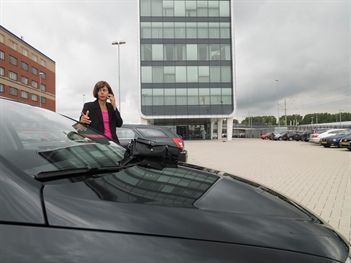Case study Brabant Mobility Network employers’ approach
The Brabant Mobility Network (BMN) employers’ approach was established by the Province of North Brabant as a network organisation that brings parties together to work towards a more accessible Brabant.
The BMN acts as an umbrella organisation under which 13 communities were established at economically-significant locations in Brabant in the period 2014-2017. Based on a traffic problem analysis, and in consultation with the B5-cities (the municipalities of Tilburg, Breda, Eindhoven, Helmond and
's-Hertogenbosch), bottleneck locations were identified around which communities were formed.
In the start-up phase, the community identified the stakeholders influencing local accessibility problems. A mobility director or the appointed community manager then approached these stakeholders and asked if they wanted to make a contribution to the community. The specific stakeholder's needs were explicitly addressed. These could be accessibility, but also sustainability or vitality.
The following stakeholders were involved in the communities:
- public stakeholders: Rijkswaterstaat, Province of North Brabant; B5 municipalities
- private and semi-public stakeholders: employers, research
institutions and attractions in the region - mobility service providers
- other stakeholders
Implementation
The participants decided together on the problems they would tackle and the measures they would use. A core team of BMN advisers guided the communities. The BMN worked closely with the government Optimising Use Follow-up programme and the Optimising Use Brabant programme.

Specifically, around 100 companies and institutions were active in the 13 communities. Together, they represented over 75,000 employees and 90,000 students. Public and private parties recognise that this form of partnership produces good results. In the communities, the approach led to the programming of joint mobility management activities such as the E-bike try-out weeks. Individual companies also implemented mobility measures such as a shared electric car scheme for business travel and a student2student ride-sharing app.
The province paid the costs of the community managers and the mobility director, with cofinancing from the government under the Optimising Use Follow-up programme. There was no fixed budget for implementing the measures. Employers paid for the implementation, but they could also apply for 45% cofinancing from the municipality under the Optimising Use Follow-up programme budget.
Results
The BMN's strength lies in connecting parties, providing knowledge and inspiration and looking for development opportunities. See the Employers’ approach fact sheet for an overview of the costs and effects of various approaches.
The BMN has developed a standard community approach that can be widely applied. It comprises a method with distinct phases (qualifying, starting up, making it work, keeping it working, and broadening) and various tools. Examples of these tools are a qualification checklist, interest analysis and an environmental analysis.
The community approach lends itself perfectly to an area-specific approach. Around an area, there are many stakeholders with shared interests. Because the approach is standardised and has proven itself in practice, successful broadening is very promising.
Considerations for deployment elsewhere
Not all communities are equally advanced in their approach. If there are many changes in a community (e.g. by relocation or building new roads), there will be many measures. So the community is most efficient when many things change, because then the right people from all parties take joint action immediately. If there is less change in a community, the need for cooperation is less and fewer measures are deployed.
Everything in the community is about cohesion and cooperation.
All parties that have an interest in solving an issue, such as high demand for parking or congested access roads, must really want to work together.
The community manager is very important in a community-based project. An enthusiastic, inspirational community manager ensures that the group meets regularly, exchanges knowledge and experience, and is energised by the sessions, so that they also want to work on measures themselves.
